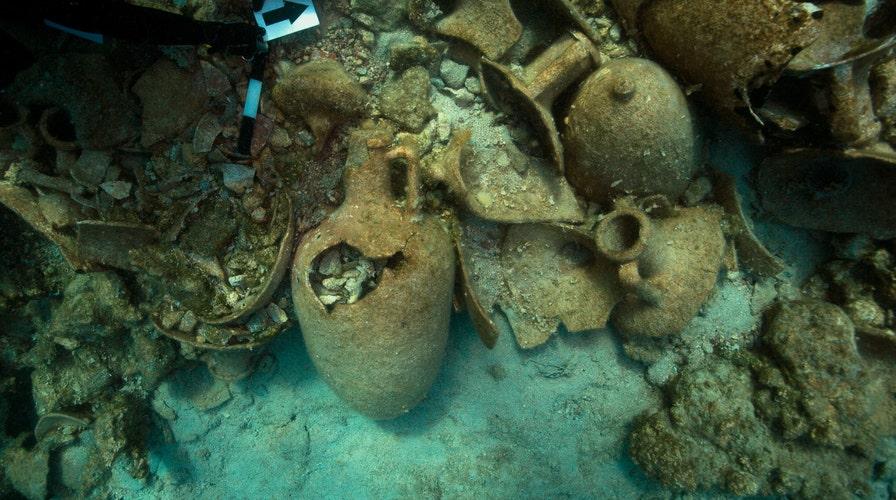
Un barco que fue “maldecido” por miembros de tribus nativas ha sido identificado casi 350 años después de su desaparición, resolviendo uno de los misterios marítimos más antiguos y notorios de Estados Unidos.
El Griffin, que desapareció en su viaje inaugural en 1679, ha sido llamado el “santo grial” para los cazadores de naufragios que exploran los Grandes Lagos de América del Norte.
Fue construido por el explorador francés René Robert Cavelier, señor de La Salle, con el fin de encontrar una ruta a través de los lagos hacia China y Japón.
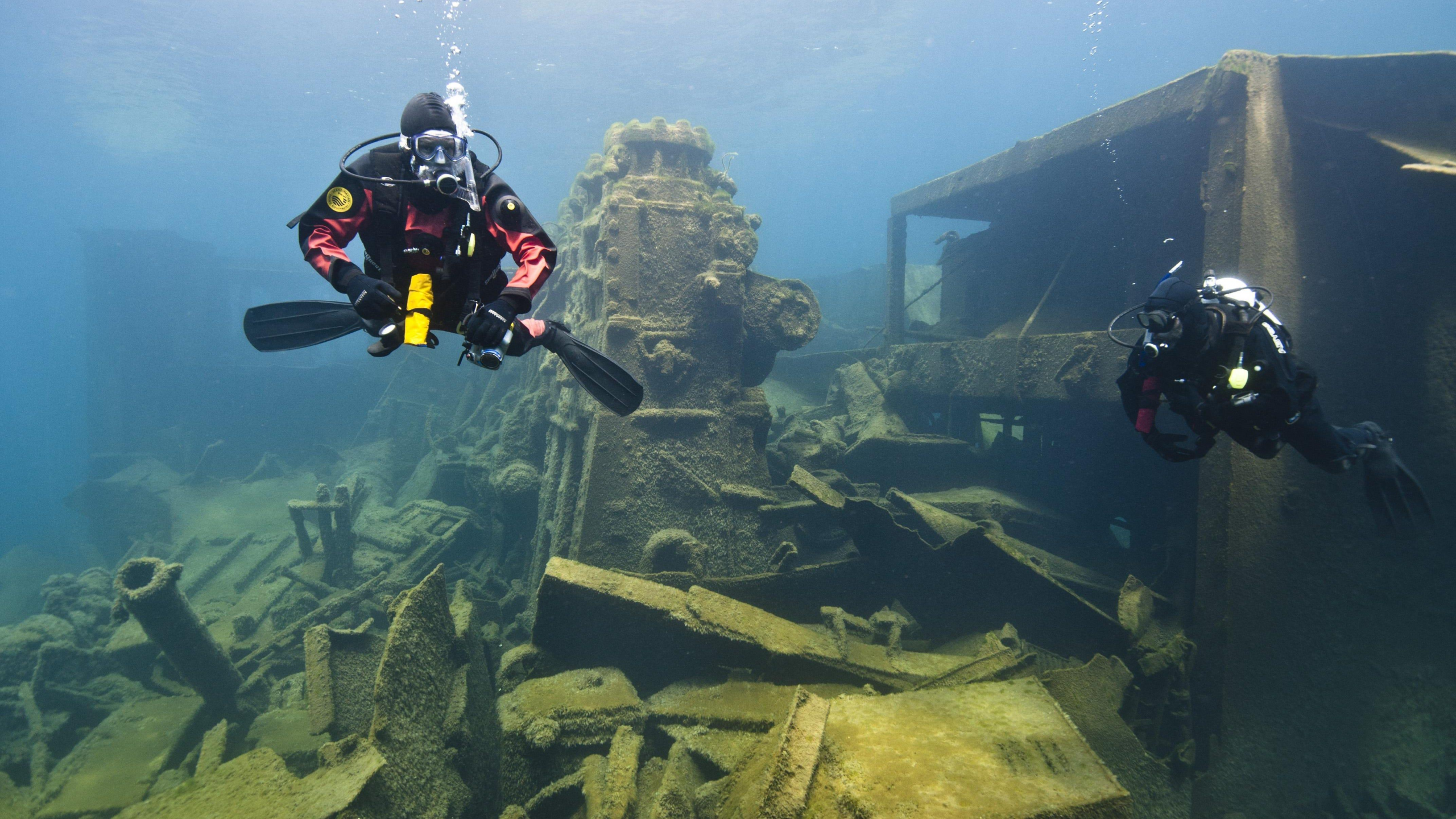
Pero el barco desapareció mientras transportaba un valioso cargamento de pieles, en medio de rumores de que había sido maldecido por un profeta de la tribu iroquesa.
Ahora los cazadores de naufragios Steve y Kathie Libert dicen que han encontrado el infame barco, que fue el primero en navegar por los Grandes Lagos más allá de las Cataratas del Niágara.
Él y su esposa expusieron su caso por haber descubierto el barco en un nuevo libro, Le Griffon and the Huron Islands – 1679: Our Story of Exploration and Discovery.
Libert dijo: “Nuestra extensa investigación y desciframiento de documentos históricos nos llevaron precisamente al lugar de descanso de un barco de la época colonial no descubierto”.
According to Mr and Mrs Libert, The Griffin is a good match for wreckage found in 2018 near Poverty Island, Lake Michigan.
A bowsprit discovered a few miles away in 2001 is another part of the vessel, they claim.
Scroll down for video.
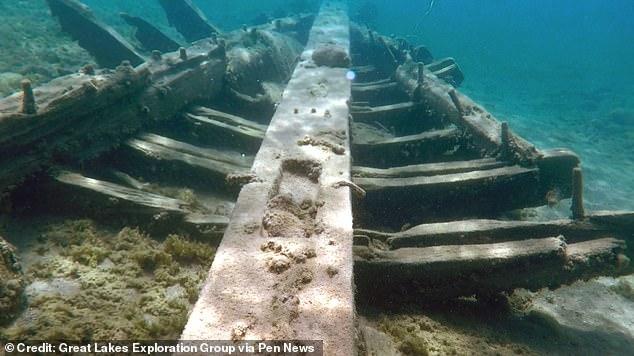
The Griffin – a ship that was ‘cursed’ by native tribesmen – has been identified nearly 350 years after it vanished, solving one of America’s oldest and most notorious maritime mysteries. Pictured: Images of the 2018 dive on a wreck found in 2018 near Poverty Island, Lake Michigan. It is now believed to be the famous ship
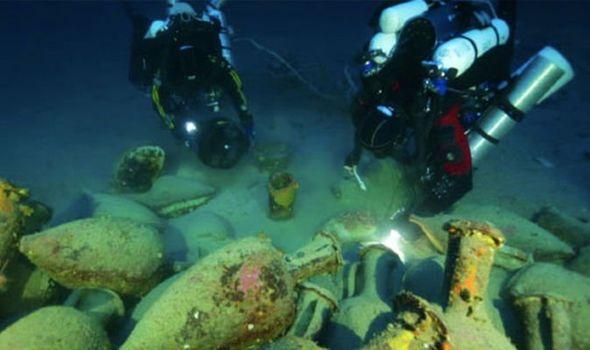
The Griffin, which disappeared on its maiden voyage in 1679, has been called the ‘holy grail’ for shipwreck hunters probing North America’s Great Lakes
La Salle – who was not aboard The Griffin when it disappeared – never found out what happened to his ship, but the wreckage sheds new light on its fate.
Mr Libert said: ‘There are numerous theories as to what happened to The Griffin.
‘Father Louis Hennepin said it was lost in a violent storm. ‘Some say that the native Indians boarded the ship and killed the crew. They then set the ship on fire.
‘Many believed the Jesuits were responsible for the ship’s disappearance. ‘La Salle was certain that the captain and his men committed mutiny, sank the ship and absconded with all the furs.’
He continued: ‘Both the Seneca and Iroquois felt threatened by the construction and sight of Le Griffon, and felt that it was a threat to the ‘Great Spirit.’
‘The Seneca were in awe of the French for having built such a large canoe. They were concerned for their safety in as much that they tried to burn the ship during construction.’

Shipwreck hunters Steve and Kathie Libert set out their case for having discovered the ship in a new book, Le Griffon and the Huron Islands – 1679: Our Story of Exploration and Discovery
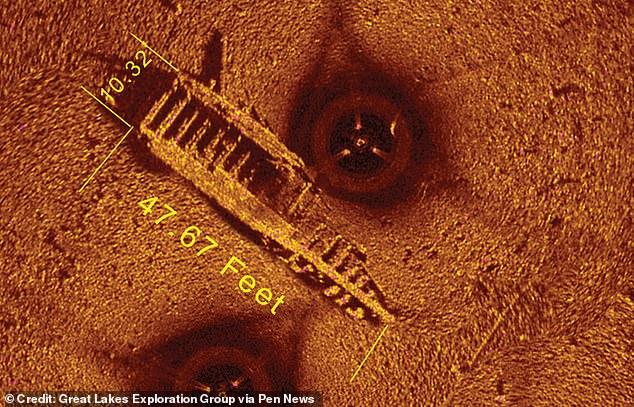
A scan of the wreck taken by the Great Lakes Exploration Group. The wreck lies in Lake Michigan
Ship cursed by native tribesmen identified after 350 years
According to legend, natives even cursed the ship. Metiomek, an Iroquois prophet, apparently told La Salle: ‘Beware! Darkness like a cloud is ready to envelop you.
‘The Christian Indian’s curse rests on you and on your great canoe.
‘She will sink beneath the deep waters and your blood shall stain the hands of those in whom you trusted!’
Native tradition holds that The Griffin became a ghost ship, whose crew are sometimes heard chanting as she sails among the clouds on a moonlit night.
But the wreckage suggests that The Griffin was lost in a storm.
‘The ship has no indications of fire damage to the wooden remains,’ said Mr Libert.
‘We are confident the ship was wrecked due to a severe storm.

‘The distance of 3.8 miles between the bowsprit and main sections highly suggests the Indians did not sink it either, nor did La Salle’s men mutiny and sink the ship.
‘If any of the latter was true the ship would rest in deeper water instead of shallow waters.’
Mr Libert believes the Griffin was caught in a four-day storm and the bowsprit, which was held in place only by wooden wedges, broke off before the rest of the ship sank.
The cargo of furs, estimated at up to $12,000 in value – nearly $900,000 (£640,000) in today’s money – likely went to the depths with her.
And, as the curse foretold, La Salle was later murdered during a 1687 expedition by a member of his party. He was 43.
Carbon dating of the bowsprit places suggests an age range within a year of the sinking.
The other wreckage has been approximately dated to between 1632 and 1682.
Mr Libert has also highlighted several details in the wreckage indicative of contemporaneous French design.
For Mr Libert, it’s the realisation of a childhood dream, sparked by a history teacher who told him about the ship.
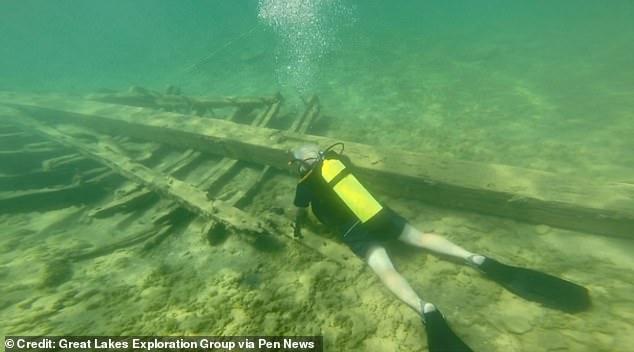
Steve Libert diving on the ship in 2018. Mr Libert said the evidence suggests that the ship was lost in a storm
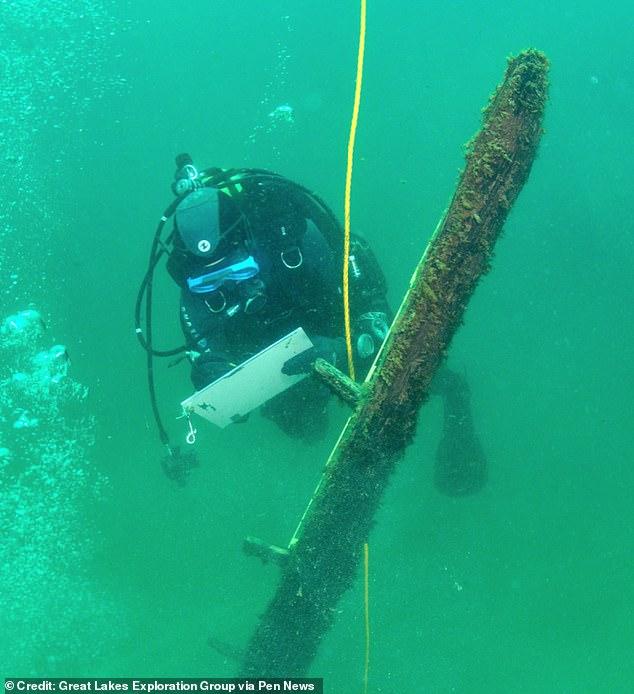
A photo from the 2018 dive shows the bowsprit of the ship believed to be The Griffin. The bowsprit is the spar running out from the bow (front) of a ship)
He said: ‘My interest began the day my teacher reached over and touched my shoulder, and said out loud in class, “maybe one day, someone in this class will find it.”
‘Fifty-one years later, I am still intrigued by this story.’
But it’s been far from straightforward.
The 2001 discovery of a bowsprit sticking out the lakebed sparked a 10-year legal battle with the State of Michigan, preventing the explorers from excavating for the rest of the ship until 2013.
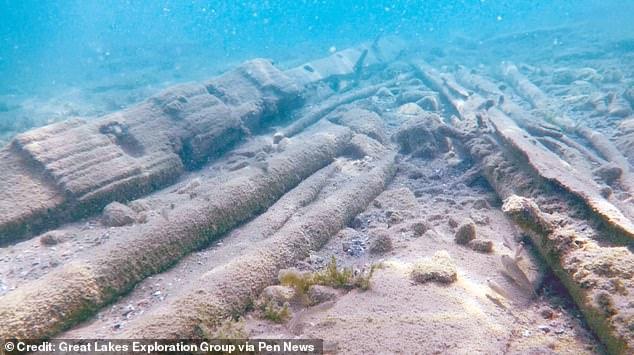
Images of the severely dilapidated wreckage show it lying on the bed of Lake Michigan
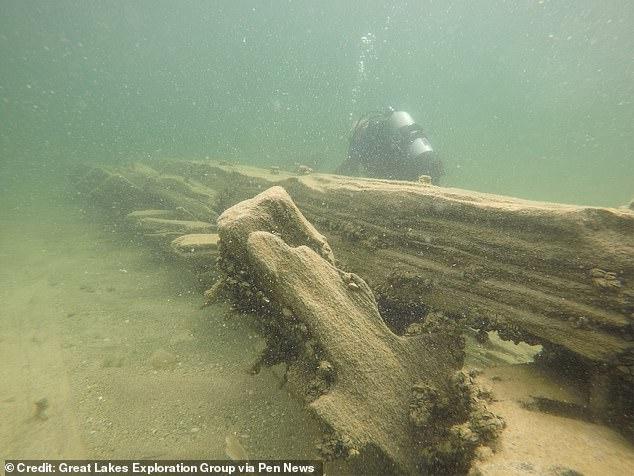
This image shows the ship’s keelson – the structure which fastens a ship’s floor timbers to its keel
Only then did the Liberts and the Great Lakes Exploration Group discover that the bowsprit was separate from the remainder of the vessel.
Michel L’Hour, a French government archaeologist who’s been called ‘Indiana Jones in a diving suit’, took part in the excavation and theorised that the rest of the ship was nearby.
Mr Libert then spent two years sifting through satellite imagery before he made a breakthrough. ‘The imagery depicted the keelson and frames,’ he said.
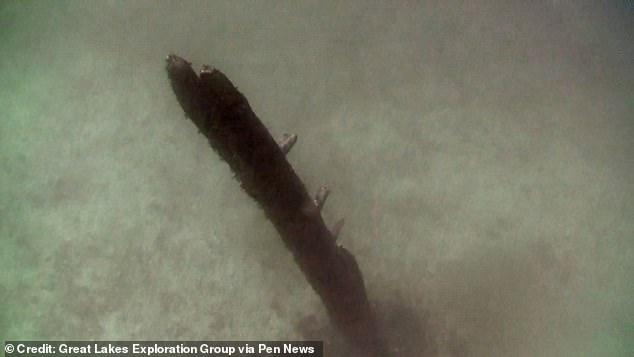
The bowsprit is seen here sticking out of the bed of Lake Michigan
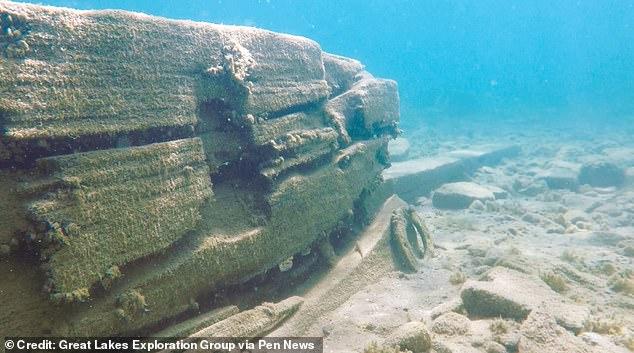
The Liberts are prevented by the State of Michigan from conducting an in-depth excavation of the wreck site
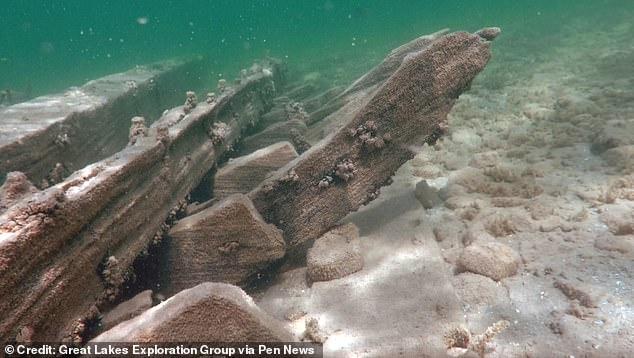
Mr Libert said: ‘It is just a matter of time before we achieve our goal. Possibly a cannon, hopefully with the date stamped on it.’ Pictured: Some of the wreckage
‘What I suspected was a ship was confirmed by me during a dive in September 2018.
‘I was emotionally drained of all my energy, and was in a complete state of relief and exhaustion, but I could still yell out the words “we found it!” once I broke the surface.
‘Michel was spot on when he said the main body of the wreck would be within four miles of the bowsprit.’
The wreck believed to be the Griffin was found near Poverty Island on Lake Michigan
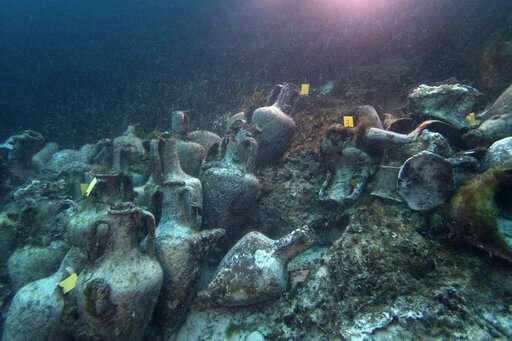
Pero incluso ahora, el estado de Michigan impide a los Liberts realizar una excavación en profundidad.
Libert dijo: “Creo que el Estado siente que estamos invadiendo su soberanía y que no somos más que cazadores de tesoros que se entrometen en los derechos de la academia y los arqueólogos.
«Pero podemos buscar sistemáticamente en el fondo utilizando técnicas no intrusivas y dispositivos de detección remota para obtener pruebas de diagnóstico concluyentes.
“Es sólo cuestión de tiempo antes de que logremos nuestro objetivo. Posiblemente un cañón, ojalá con la fecha estampada.
El libro de los Libert, Le Griffon and the Huron Islands – 1679: Our Story of Exploration and Discovery, está disponible a través de Amazon por £24,69.





